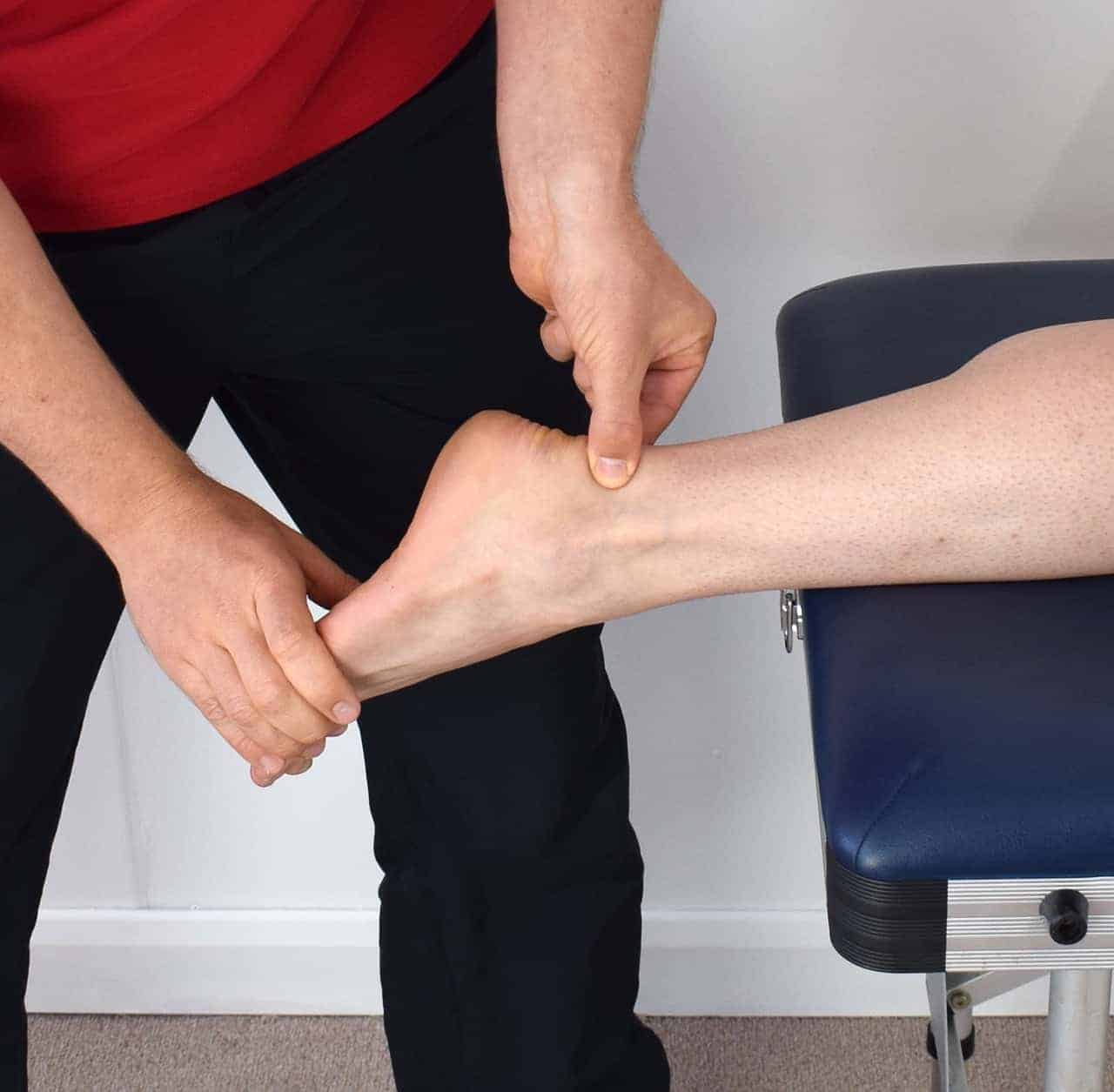The heel is the largest bone in the foot. And when heel pain strikes, you know it in short order.
An Overview of Heel Pain
Damaging or overusing your heel may cause pain to develop. Plantar fasciitis, or pain that radiates from beneath the heel, is the most common source of heel pain. Achilles tendinitis is characterized by:
- Pain that occurs on the inner or outer side of the heel.
- Pain that occurs behind the heel.
Most people explain that the pain tends to start mild and progress in severity over time. In some cases, it resolves without intervention. In others, the pain may become chronic and debilitating. Treating pain early is important in preventing it from becoming severe. But how?
If your heel starts to feel a little achy, check out these natural remedies to soothe heel pain.
10 Natural Remedies to Soothe Heel Pain
1. Ice
Ice is a common natural remedy for treating inflammation. There are several ways you can use ice for pain, such as:
- Ice pack. Make an ice pack by filling a plastic bag with ice or a package of frozen vegetables. Wrap a towel around the bag and apply it to your heel for 15 to 20 minutes, three to four times a day.
- An ice bath. Make an ice bath by filling a shallow pan or tub with ice and water and soaking your heels for 10 to 15 minutes, several times a day. It is important that your toes stay out of the water to prevent frostbite.
- Ice block. Make an ice block by filling a small foam or paper cup with water and freezing it. Rub the ice block over your heel for five to 10 minutes, several times a day.
2. Stretches to Relieve Heel Pain
Stretching your foot and calf can soothe pain caused by plantar fasciitis. Simple foot stretches and exercises ease pain, strengthen muscles, and improve flexibility in the foot. Stretches and exercises to try include:
- Rolling stretch
- Calf stretch
- Foot flex
- Picking up marbles
- Towel curls
Stretching is one of the best remedies not only for soothing pain but also for preventing pain. When performing these exercises and stretches, you should not feel any additional pain. Complete these stretches two to three times a day for maximum relief.
3. Lavender Essential Oil
Essential oils are found in different parts of plants and are extracted through a process called steam distillation.
Research suggests that some essential oils, such as lavender, can help soothe pain and inflammation.
A 2015 study revealed that lavender essential oil might be an effective anti-inflammatory agent and analgesic. When diluted and applied topically, the lavender essential oil was as effective in relieving pain as prescription pain medications.
4. Flaxseed Oil
More than half of the fatty acid found in flaxseed oil is alpha-linoleic acid (ALA), an omega-3 fatty acid. When ingested, ALA converts into docosahexaenoic acid (DHA), a powerful omega-3 fatty acid, and eicosapentaenoic acid (EPA). When taken for a month, the ALAs found in flaxseed oil significantly diminished some markers for inflammation.
There are several ways to mix flaxseed into your diet, including:
- Add ground flaxseed to your salad
- Mix flaxseed oil into an egg, tuna, and chicken salad.
- Roast vegetables in flaxseed oil.
- Replace half of the oil or butter in a recipe with flaxseed oil.
- Coat cooked pasta in flaxseed oil.
- Add ground flaxseed to your smoothies, cereal, and oatmeal.
- Mix flaxseed oil, vinegar, and Dijon mustard to make a vinaigrette.
- Use whole or ground flaxseed in your bread recipes.
People who take blood thinners should avoid taking flaxseed oil because it may increase bleeding. People who take medication to reduce their cholesterol should also take caution with flaxseed oil, as it may cause levels to decrease too far.
5. Weight Loss
Extra weight means extra pressure on your heel. If you are overweight, shedding a few pounds reduces the amount of pressure on your plantar fascia. Consult with your doctor to develop a weight loss plan that focuses on routine stretching, regular exercise, and a balanced diet.
6. Supportive Shoes and Orthotics
If you are suffering from heel pain, then you may need to look at your shoes. If you are on your feet often, shoes with low heels and proper arch support should be a staple in your closet. Supportive shoes help prevent inflammation in your heels.
Orthotic shoe inserts are another option to consider. They help distribute weight evenly, especially if your feet have high arches. Shoe inserts and foot pads are readily available over the counter at most pharmacies but can also be custom made for your foot type.
7. Massage
Massages are one of the best natural remedies to soothe pain anywhere on the body, especially your heels. Simple massage techniques help ease pain and can be done almost anywhere, whenever your heel is in pain.
Before beginning your massage, make sure that you are seated comfortably and able to hold your foot with both hands. Using your thumbs and start at the balls of your feet. Then, massage your heels in a circular motion up towards your heel. Aim to apply as much pressure as you massage, ensuring that you do not cause additional pain. You can also try rolling a golf ball, tennis ball, or frozen water bottle underneath your heel and arch of your foot.
Massages help relieve pain by:
- Improving blood circulation
- Invigorating blood flow
- Diminishing pain signals
- Stretching and relaxing tight tendons and muscles
8. Rest
Natural remedies for plantar fasciitis can be as simple as giving your feet a break. Pain may indicate that your feet need some time to rest, especially if you are on your feet all day or play high-impact sports.
Your feet need a chance to rest to reduce inflammation and promote healing. In the meantime, try low-impact activities such as cycling or swimming. These activities strengthen your lower body, which helps diminish reoccurring pain.
9. Night Splints
Night splints help soothe the pain by stretching the arches of your feet and calves overnight. People tend to sleep with their feet pointed down, which compresses the Achilles tendon and plantar fascia. Night splints keep the feet at a 90-degree angle, giving you a nice, continuous stretch as you sleep.
Night splints are an effective natural remedy for people experiencing plantar fasciitis for at least six months. Once your pain is gone, you can stop using the splint. They are typically used for one to three months and are available in both soft and hard mockups.
10. Anti-inflammatory Foods
“You are what you eat.”
We’ve all heard this before, but there is evidence to support this claim. Experimental research suggests that certain components of foods and drinks have anti-inflammatory properties. These foods help ease pain by reducing inflammation on a cellular level – from the inside out.
According to Harvard Medical School, foods that reduce inflammation help reduce chronic disease, such as plantar fasciitis. Anti-inflammatory foods to include in your healthy meal plan include:
- Fatty fish (tuna, mackerel, sardines, salmon)
- Green leafy vegetables (kale, collards, spinach)
- Fruits and berries (cherries, strawberries, oranges, blueberries)
- Nuts (walnuts and almonds)
- Tomatoes
- Olive oil
Foods to avoid or remove from your meal plan include:
- Red meat (steaks, burgers)
- Processed meat (sausages, hot dogs)
- Refined carbohydrates (white bread, sweets, pasta)
- Soda and sugar-sweetened drinks
- Fried foods
- Margarine
Final Thoughts on Relieving Your Heel Pain
Heel pain commonly occurs when the plantar fascia becomes inflamed. In general, the pain from plantar fasciitis is typically worse in the morning or after sitting for a long time. It tends to worsen after spending a lot of time on your feet.
The risk of plantar fasciitis is greater if you:
- Are between 40 and 60 years old.
- Are female.
- Carry extra weight.
- Have high foot arches, flat feet, or tight Achilles tendons.
- Spend many hours standing on your feet.
- Wear high heels often.
- Have an abnormal foot position or walk.
- Wear old, worn-out shoes.
There are many natural therapies for treating pain, including using splints, eating an anti-inflammatory diet, losing weight, stretching, and resting. Starting treatment early is critical to preventing the condition from progressing or becoming chronic. What other natural remedies have you tried?

















 Community
Community

